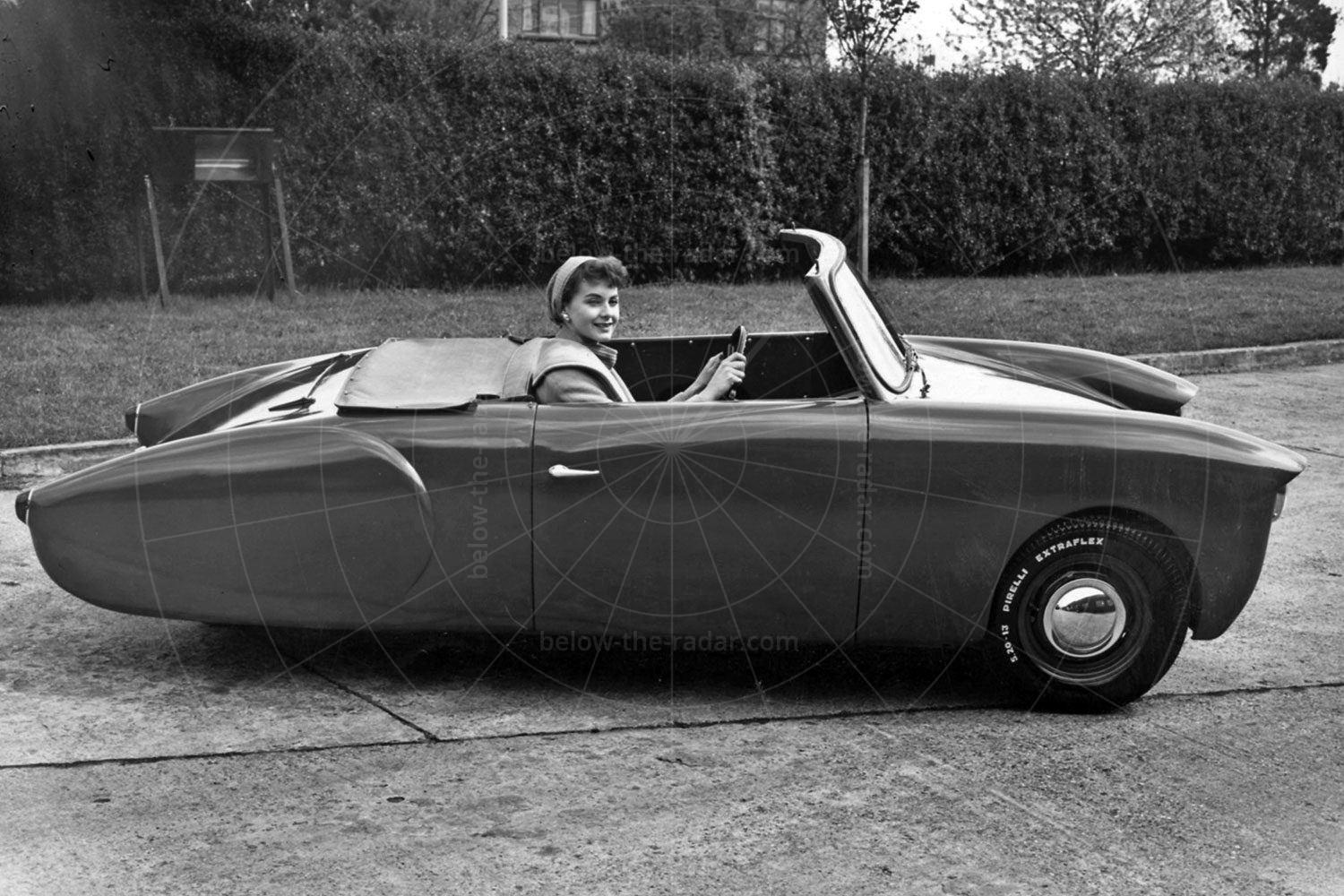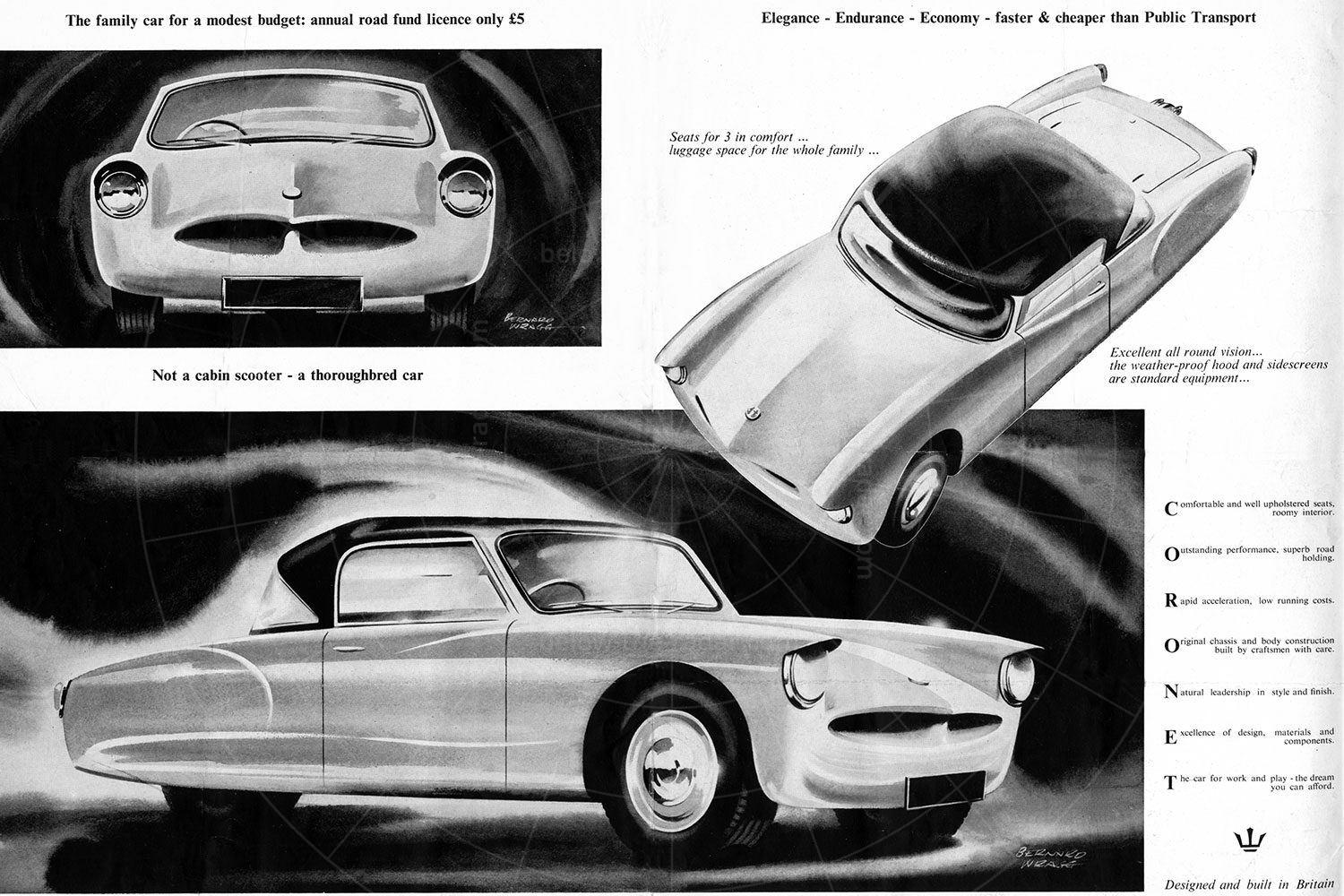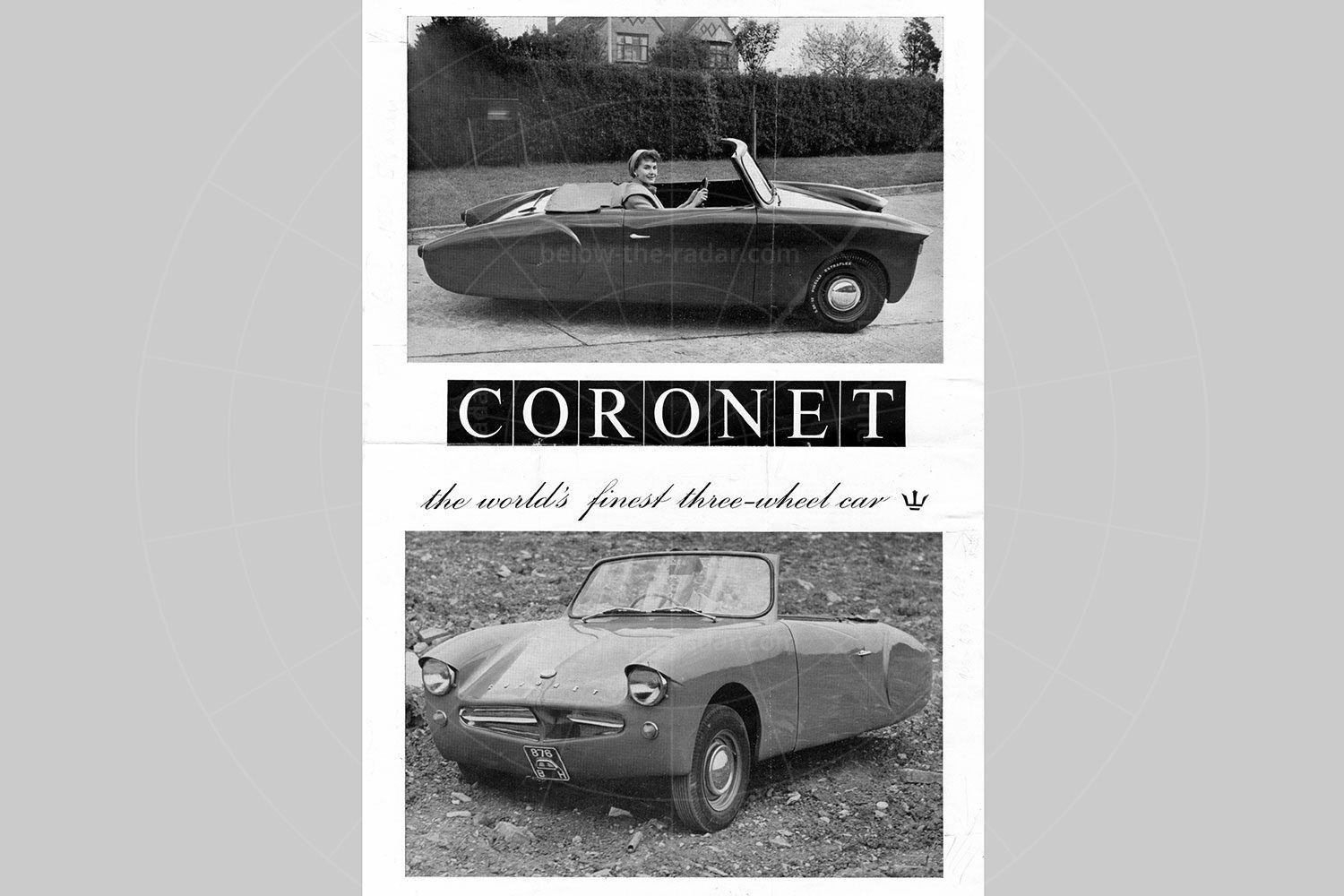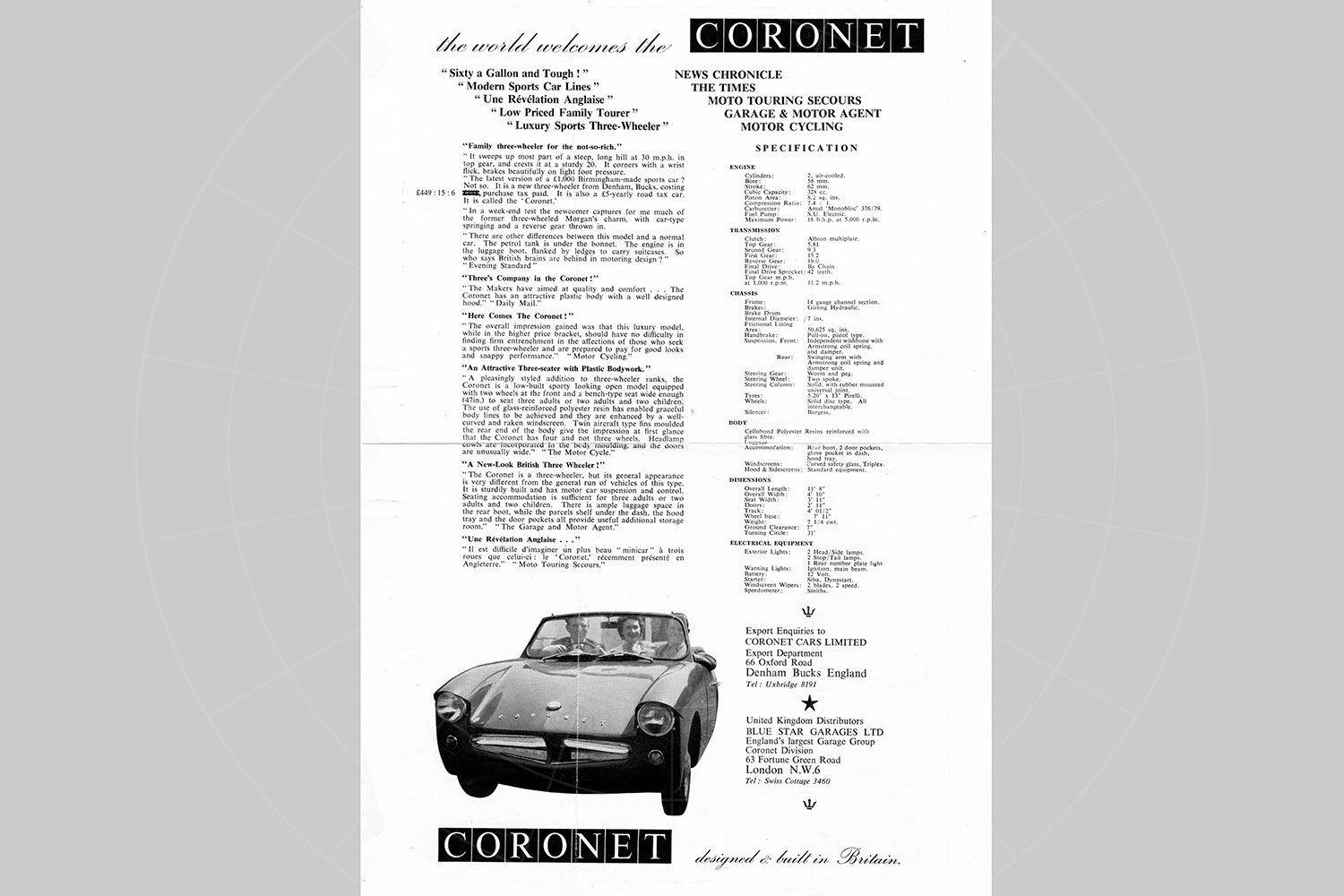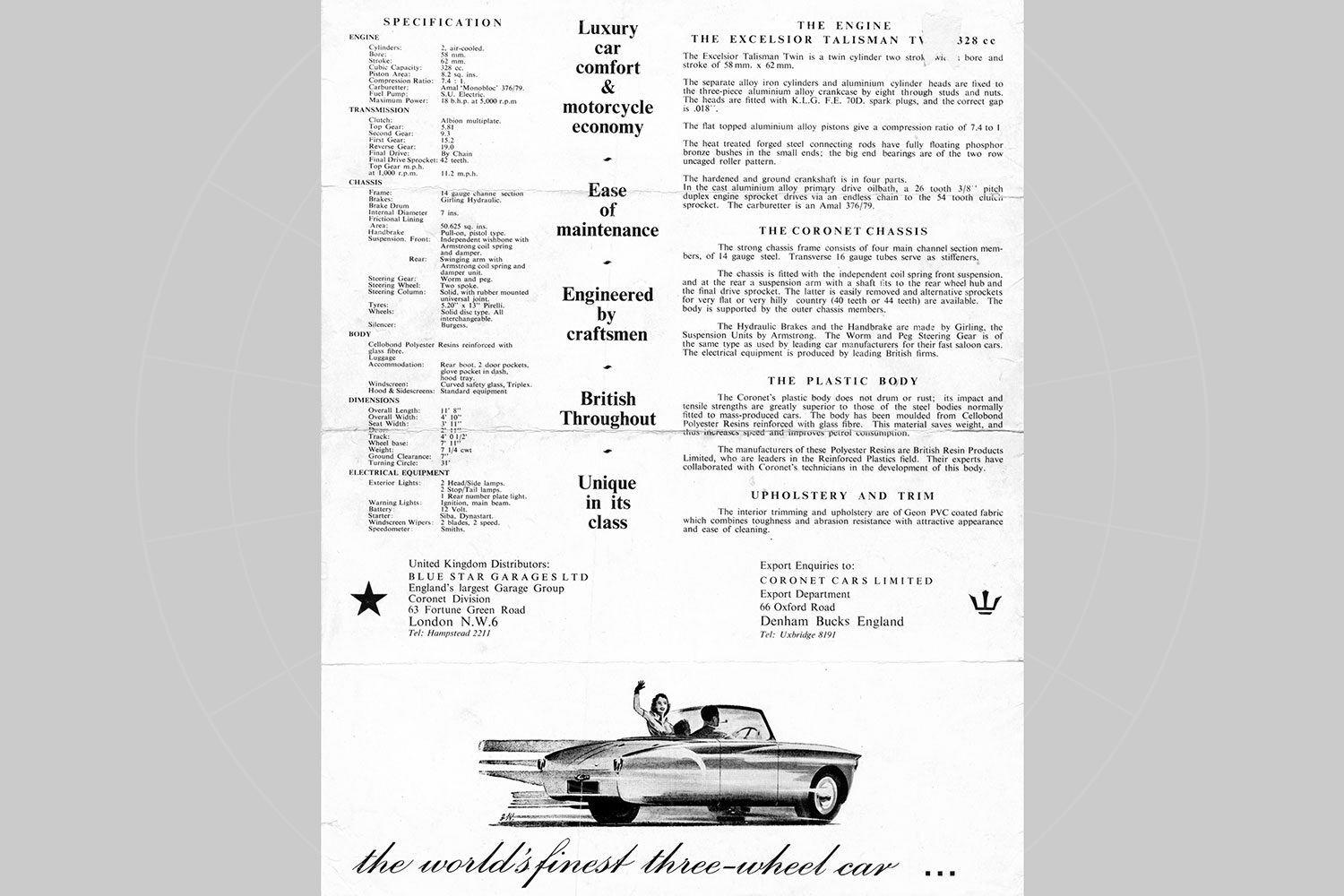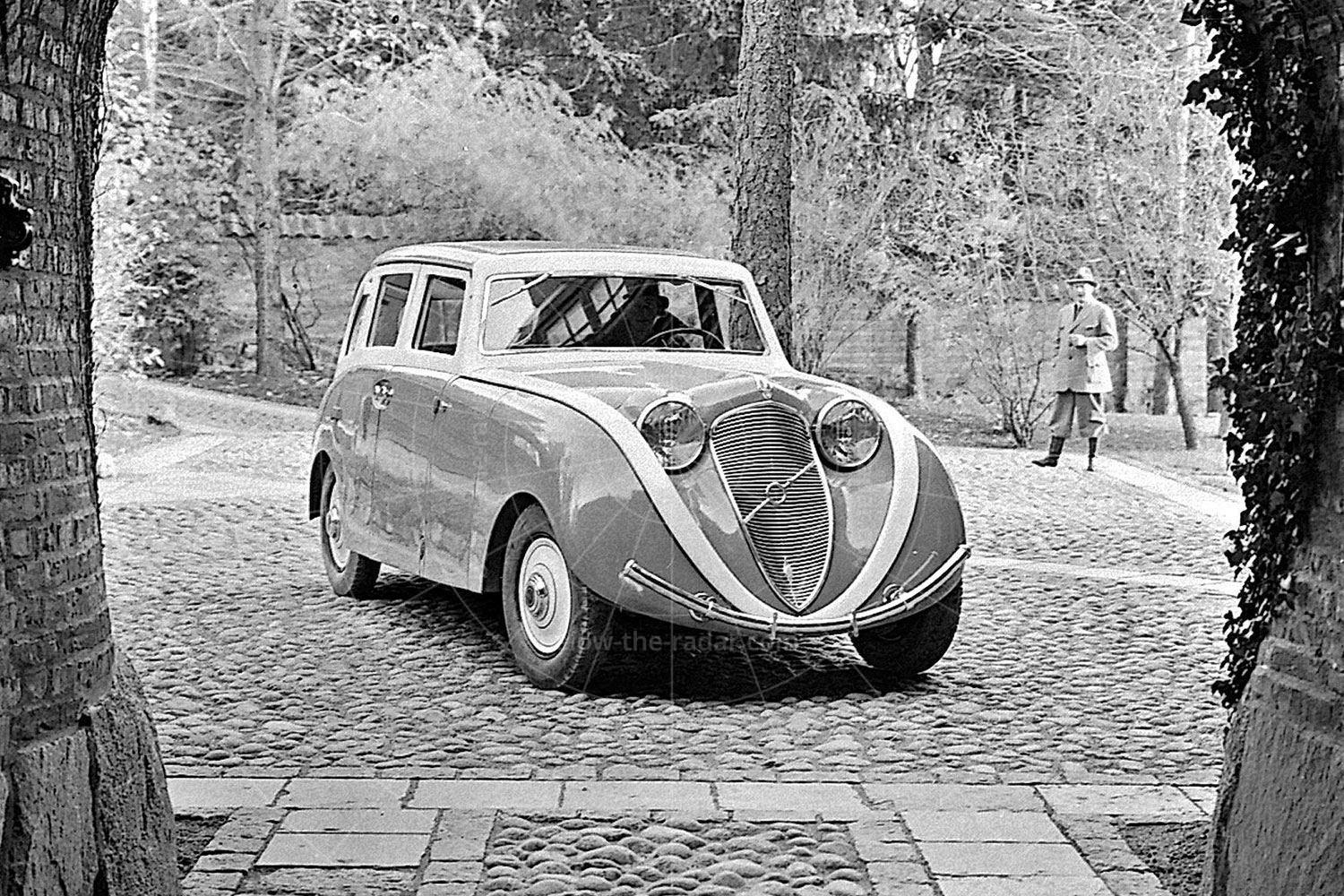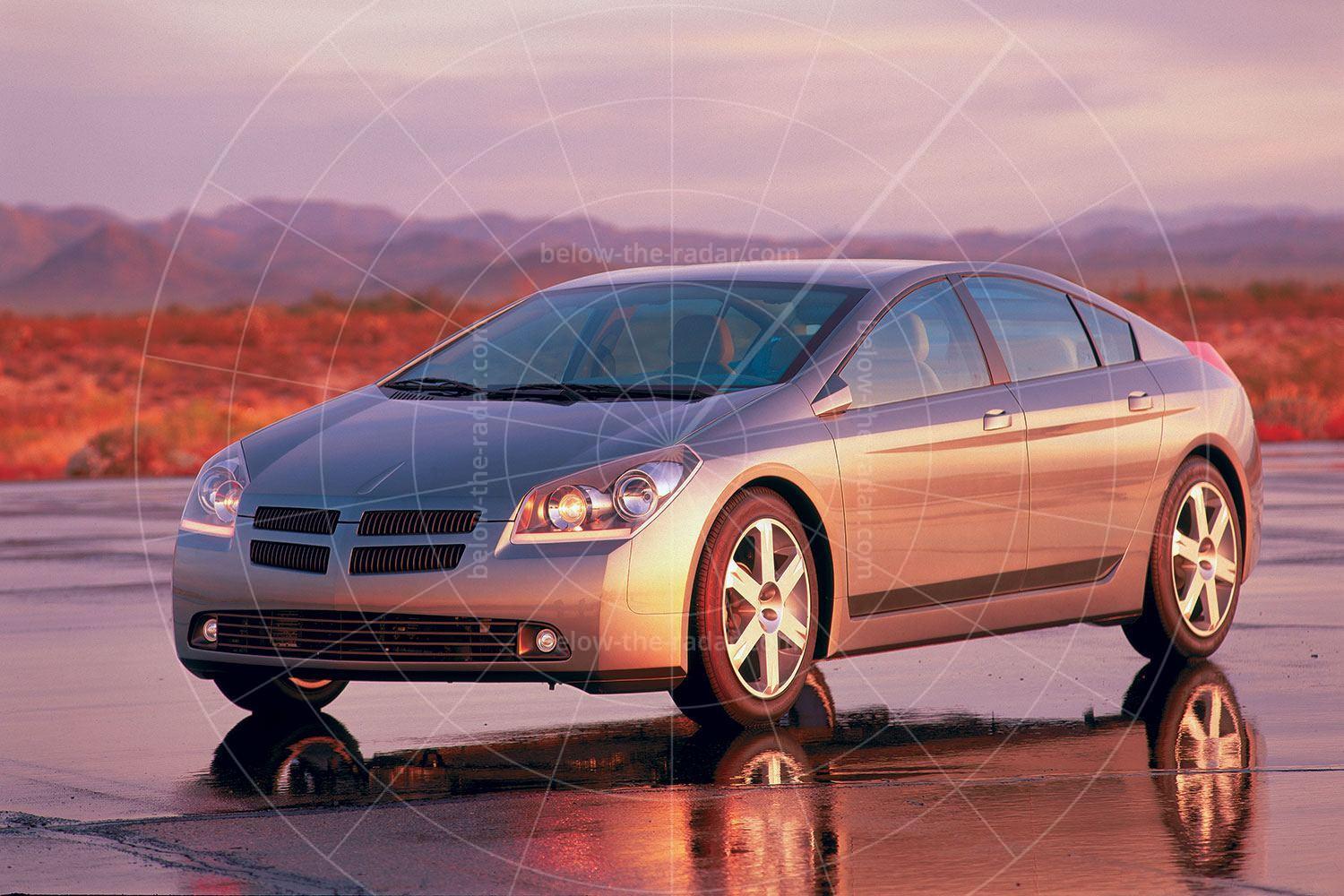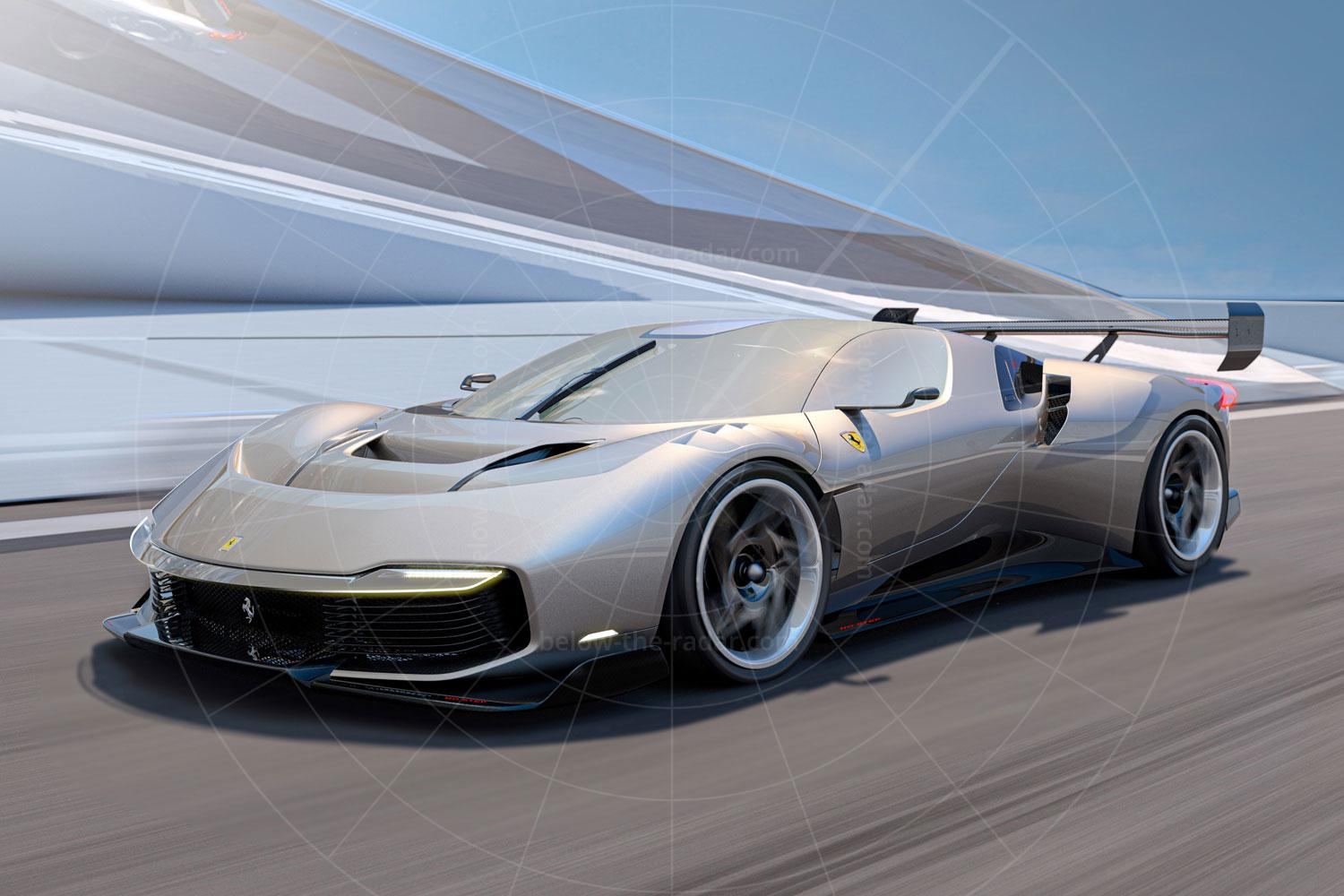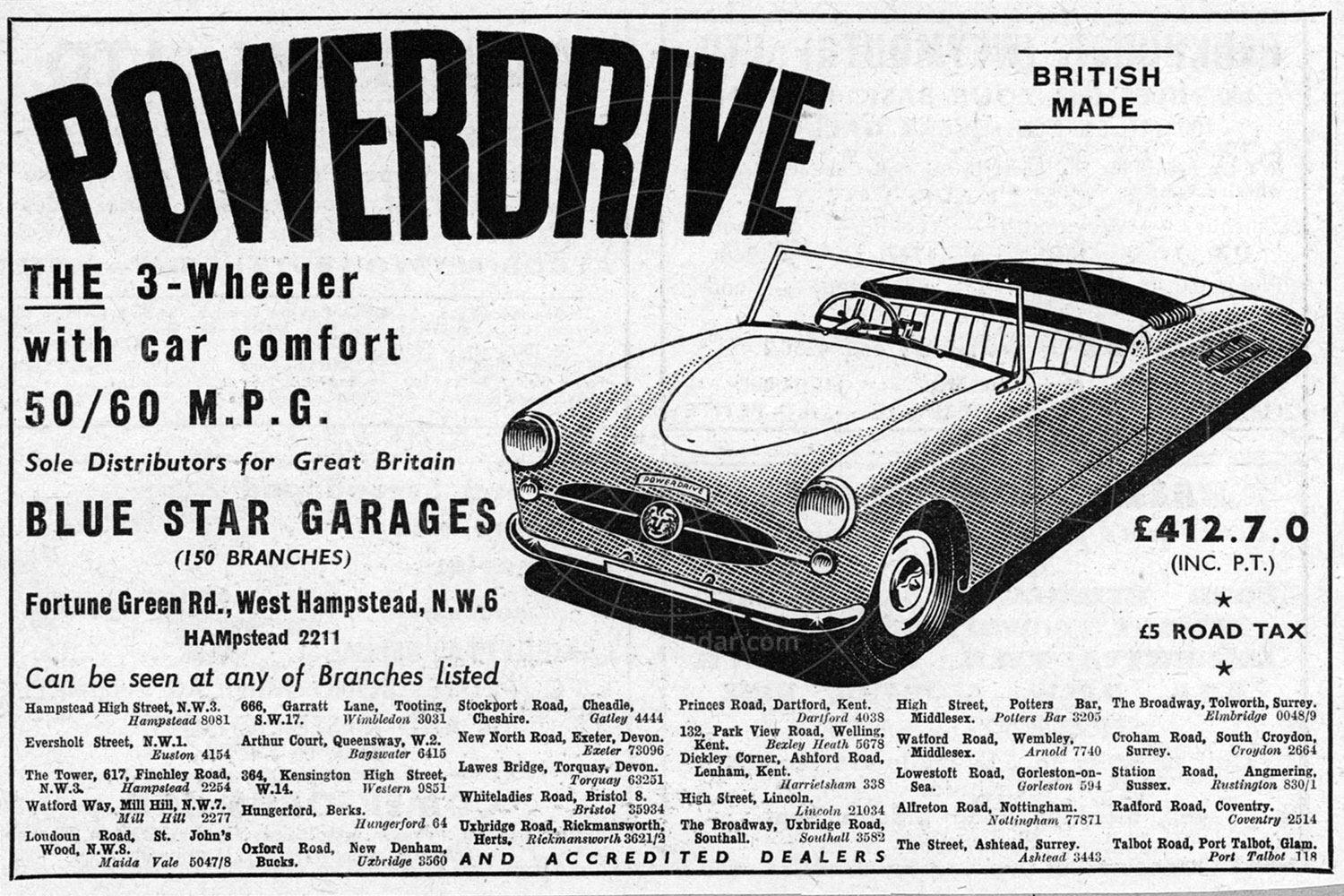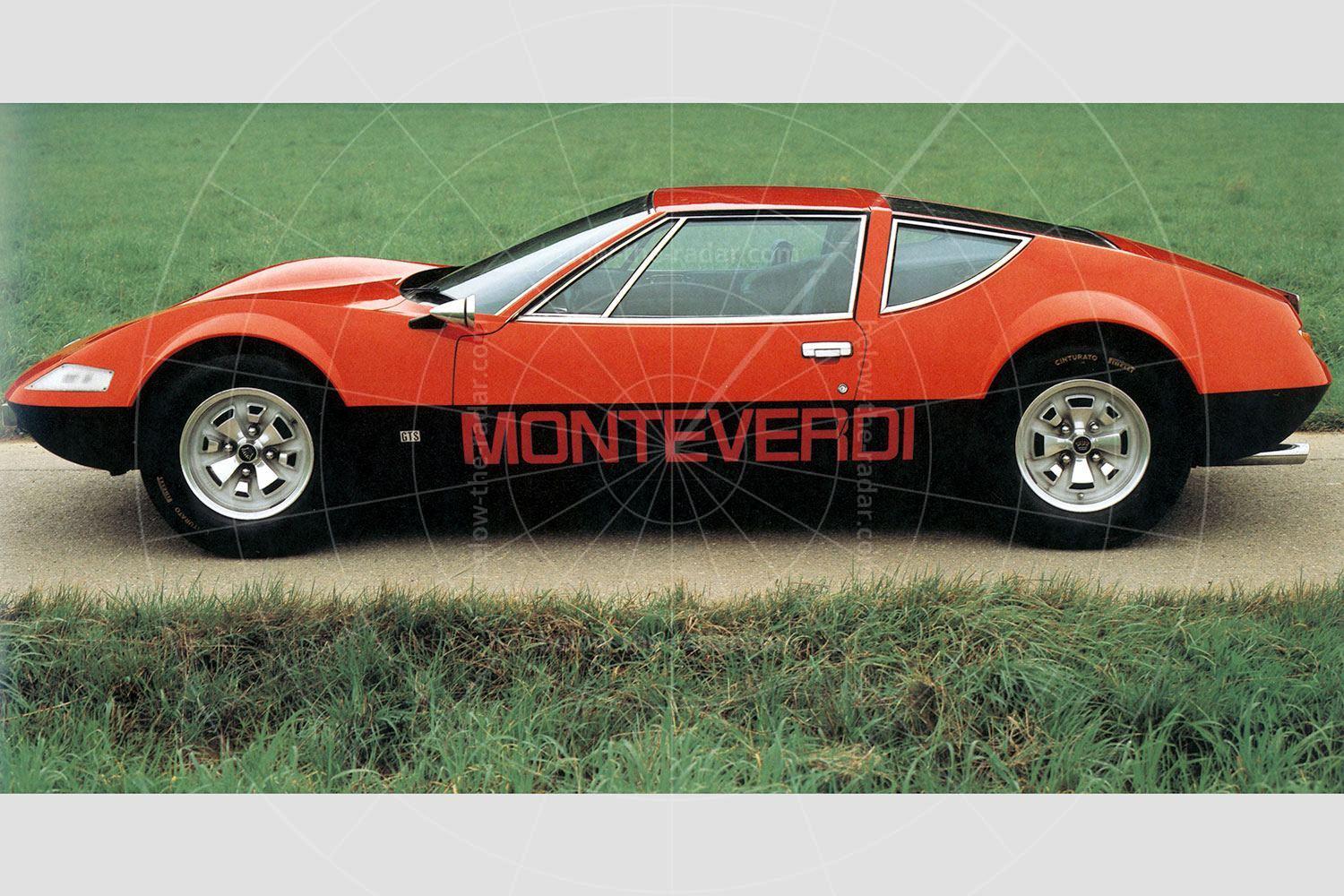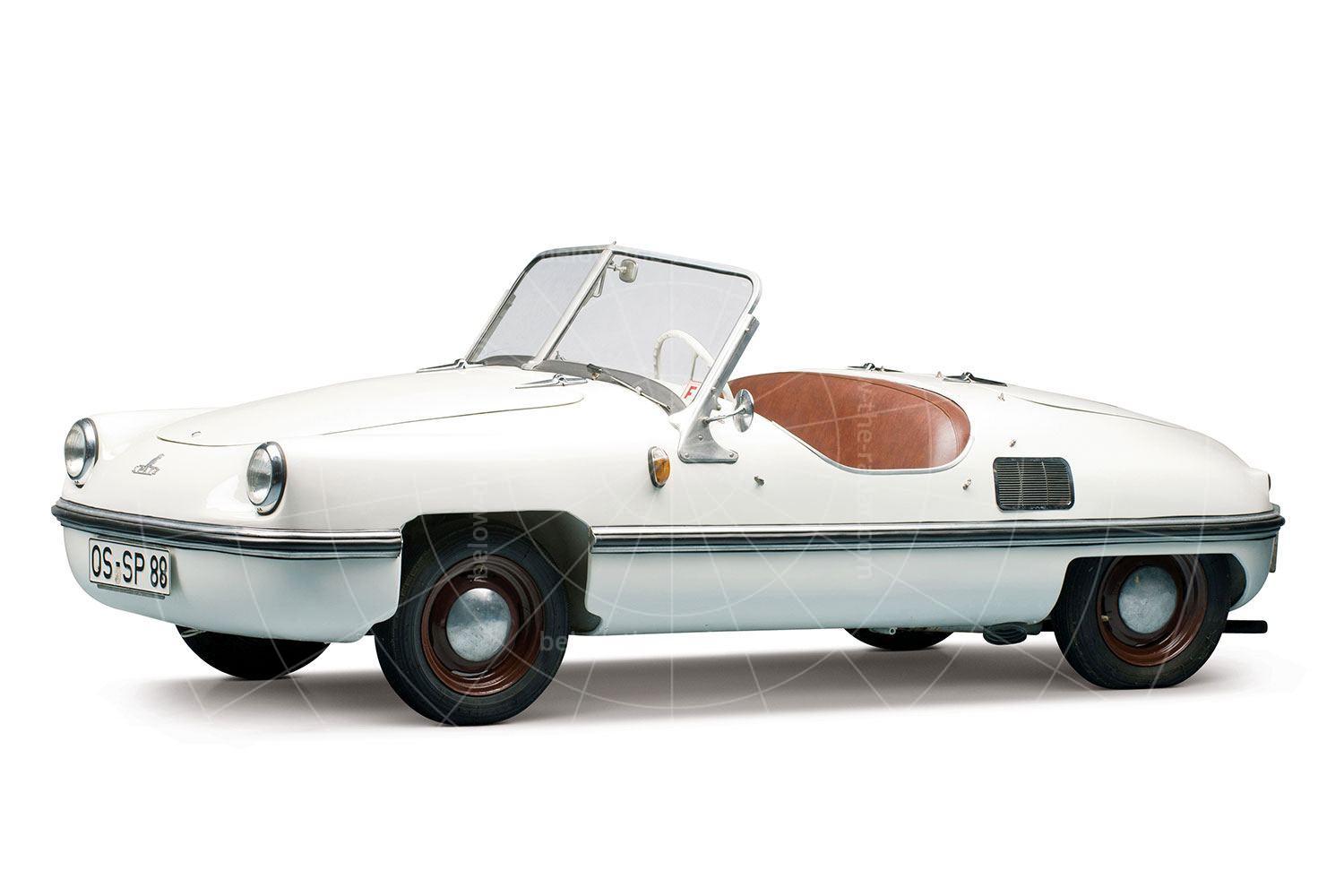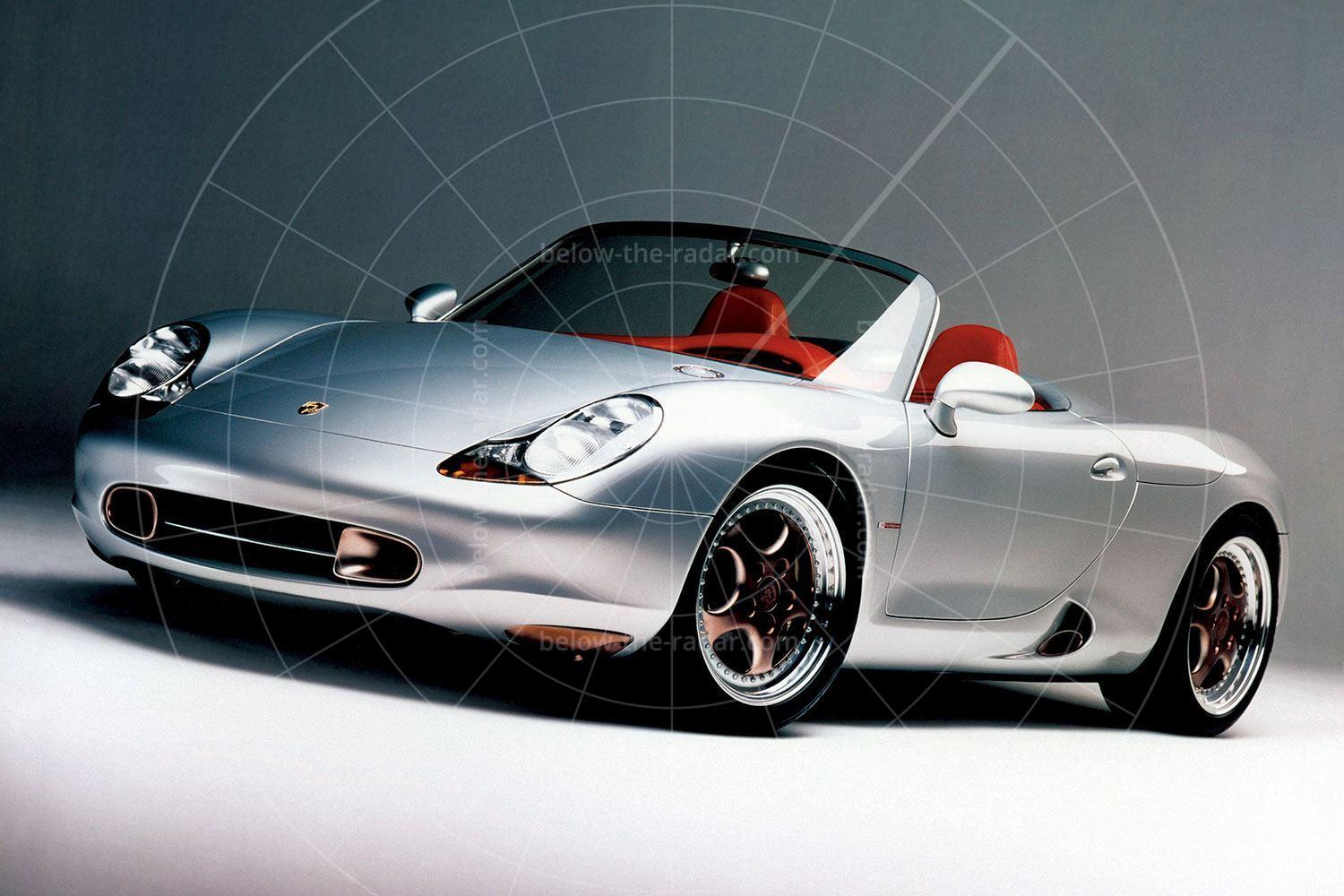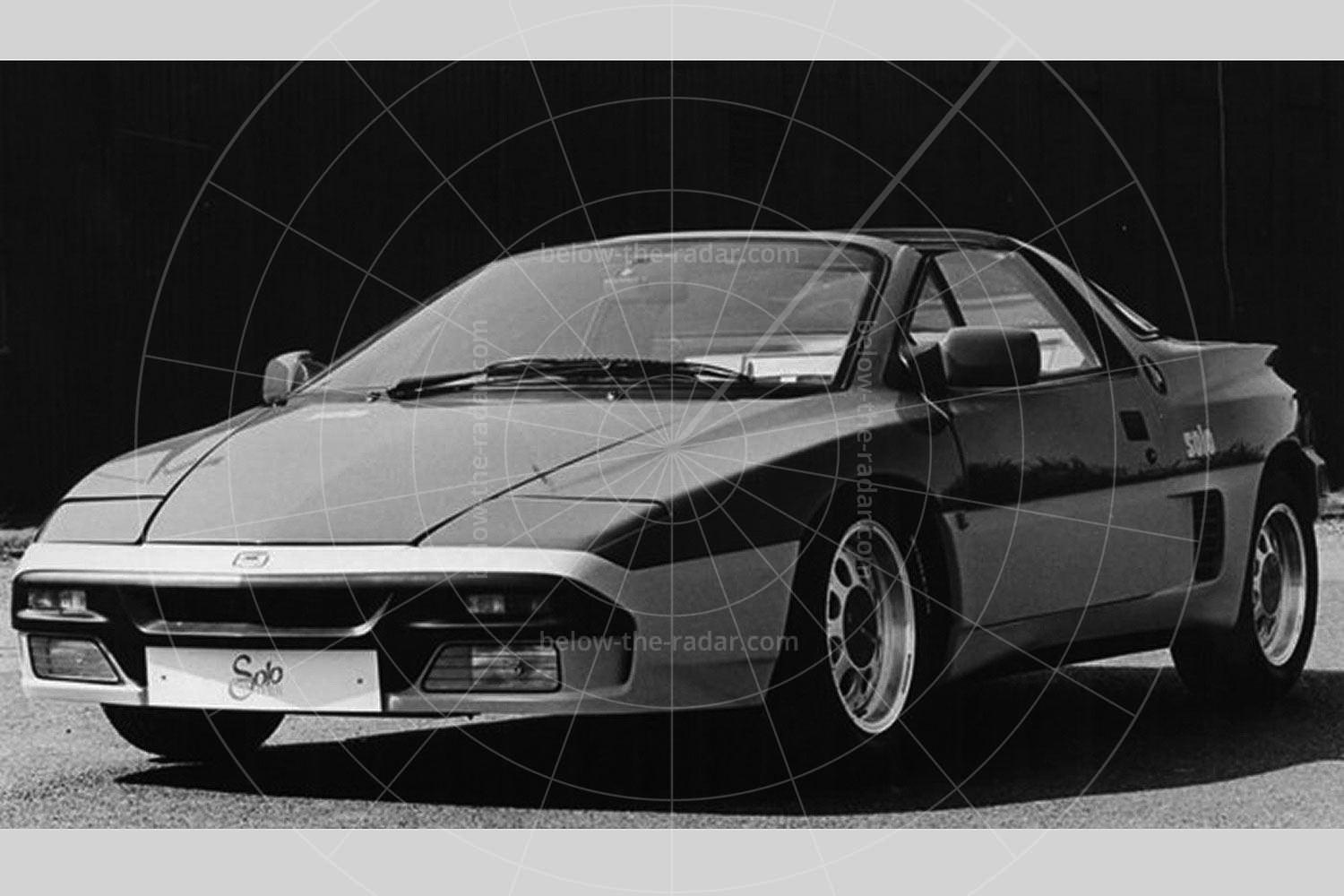Rising from the ashes of the failed Powerdrive venture, the Coronet was designed by David Gottlieb, just as that earlier car had been. This time the aluminium bodywork gave way to glassfibre – which meant that things had come full circle since Gottlieb had first embarked on three-wheeled utility car production with the plastic-bodied Allard Clipper in 1953.
It's not known how many Powerdrives were made, but it certainly didn't come close to the one per day that was promised when the car was unveiled. Despite this, Blue Star Garages (which had backed the Powerdrive project) provided manufacturing space in one of its properties in Buckinghamshire, for Coronet to build its quirky three-wheelers.
The Coronet's bodyshell comprised of eight sections which were sprayed once assembled; initially the cars were built in the Coronet factory in Buckinghamshire, before production was transferred to Middlesex-based James Whitson & Co before reverting back to Coronet's own factory.
Ambitiously advertised as “the world’s best three-wheeler”, the Coronet ditched the British Anzani two-stroke engine that had powered the Powerdrive, with an Excelsior Talisman 328cc two-cylinder unit instead. With a mighty 18bhp on tap that was enough to take the Coronet to a claimed 57mph, although 40mph was probably more realistic. With the fuel tank mounted in the nose and very little in the way of crash protection, the Coronet would have lost in a collision with just about anything at any speed above walking pace.
The arrival of the BMC Mini in 1959 led to the demise of many microcar makers and the Coronet was no exception. By 1960 the dream was over, by which point somewhere between 250 and 500 examples had been built. Of those just half a dozen or so remain, not all of which are runners.
| Vital statistics | |
|---|---|
| Produced | 1957-1960, England |
| Number built | 250-500 |
| Engine | 328cc, rear-mounted, 2-cylinder |
| Transmission | 3-speed manual, rear-wheel drive |
| Power | 18bhp at 5000rpm |
| Top speed | 57mph |
| Launch price | £450 |

